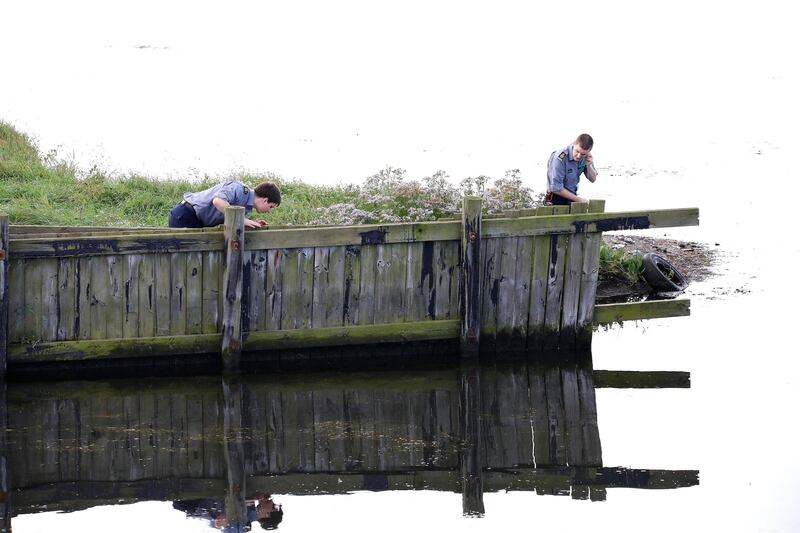After reporting from some of the most far flung places on Earth, it is a tragic irony that Kim Wall died so close to her homeland, Sweden.
The award-winning freelance reporter, who had sent dispatches from post-war Sri Lanka and Haiti, was killed in Denmark while researching an article about a semi-famous local inventor and his unusual submarine.
In a story that darkly echoes the popular Scandi-noir crime thrillers, her boyfriend raised the alarm on August 11 when Wall, 30, failed to return from interviewing Peter Madsen on his privately-built vessel, the Nautilus.
Four days later, a passing cyclist in Copenhagen spotted something at the water’s edge: a woman’s torso — missing its head, legs and arms.
Police later confirmed that the torso, which had been beaten and weighed down with metal, was a DNA match with the young woman.
Red-headed, petite and humble, Wall often surprised those that judged her on first impressions. Friends remember her as an exceptional journalist who was not easily deterred. As a freelancer, she wrote for titles such as The New York Times and trained at the prestigious Columbia University’s School of Journalism. Her Instagram account is packed with colourful and quirky photographs taken during her travels across the world. Wall was soon to embark on a new chapter in her life as she planned to move to China with her boyfriend.
Many of the details of what happened to Wall are shrouded in mystery.
What is established is that Wall met Madsen, 46, at around 7pm local time on Thursday, August 10 at Refshaleoen, a harbour area in Copenhagen. An hour and a half later, the pair were pictured in the conning tower - the part of the submarine that sits above water when at surface level - by a man on a nearby cruise ship. At 2.30am on Friday morning, her boyfriend reported her missing. On August 11, Madsen was arrested on a preliminary charge of manslaughter.
Madsen's biographer, Thomas Djursing, describes him as someone who has made a lot of enemies and was prone to getting into arguments.
“He can throw tools at you. But at the same time, he's not a violent person. I've never been afraid of him,” Mr Djursing told the Swedish daily Aftonbladet, adding, “I don't know a journalist who has not been in conflict with him”.
The DIY submarine enthusiast initially told police he had dropped Wall back on land after their interview. He denied any role in her disappearance and said she was alive when he left her.
Following the discovery of CCTV tapes from the area where he claimed he left Wall, Madsen changed his story, telling the authorities that the journalist had died in an accident on board his submarine and that he dumped her body in the sea.
_______________
Read more:
[ Body found after Danish submariner admits to dumping journalist's body at sea ]
[ Denmark submarine inventor dumped journalist's body after she died in 'accident' ]
_______________
The alleged crime scene sank shortly after Wall’s last known sighting.
Madsen told police his submarine got into technical difficulties but when the 55 feet long vessel was brought to the surface, the state of the UC3 Nautilus contradicted the inventor’s tale. Not only did the sub seem to have been deliberately sunk, a witness, Kristian Isbak, told Danish press, “There was no panic at all. The man was absolutely calm.” It is thanks to Mr Isbak that police were able to find the exact location of the wrecked submarine.
Not unusually for Denmark, the case is being held behind closed-doors. The main information to come from Madsen so far has come either via the police or his glamorous and self-assured lawyer, Betina Hald Engmark.
Ms Engmark, one of the country’s top lawyers, said, “[Madsen] wants to collaborate with the police and give investigators all the information needed in the case”.
On August 21, following a joint request from Ms Engmark and the prosecution, snippets of information discussed within the four walls of the courtroom were released. It was then that the outside world learnt Madsen’s version of events — that an accident occurred on board, Wall died and Madsen ‘buried’ her at sea somewhere in Koge Bay, about 50km south of Copenhagen. No other details were shared.
But just a few hours later, the body of a woman was found a short distance away from where Madsen said he dropped Wall overboard.
Jens Moller, the chief homicide investigator of the Copenhagen police said the torso had been in water for “some time”.
On Wednesday, police confirmed an autopsy conducted on Tuesday night revealed metal attached to the torso and that “the body bears the mark of having, most likely, been inflicted deliberate damage with the purpose of ensuring that gasses can pass out of the body — possibly in an attempt to avoid that a body rises from the seabed”.
The statement revealed that forensics had been able to find blood on the sunken and that the DNA matched both the female torso and the missing Swedish journalist. The authorities are now searching for remaining body parts and clothing.
Wall’s mother posted a note onto Facebook which read, “We cannot see the end of the disaster yet, and a lot of questions are still to be answered. The tragedy has hit not only us and other families, but friends and colleagues all over the world. During the horrendous days since Kim disappeared, we have received countless evidence of how loved and appreciated she has been, as a human and friend as well as a professional journalist. From all corners of the world comes evidence of Kim’s ability to be a person who makes a difference.”
Ominously, as the investigation into Wall’s death continues apace, Danish media began to report today that the police are now looking into a number of unresolved past cases.
Ominously, as the investigation into Wall’s death continues apace, Danish media began to report today that the police are looking into a number of unresolved past cases that could be connected with Wall’s.
One in particular that has struck many as eerily similar was the discovery of the torso and body parts of a 22-year-old female Japanese tourist in plastic bags in the waters of Copenhagen harbour thirty years ago.






